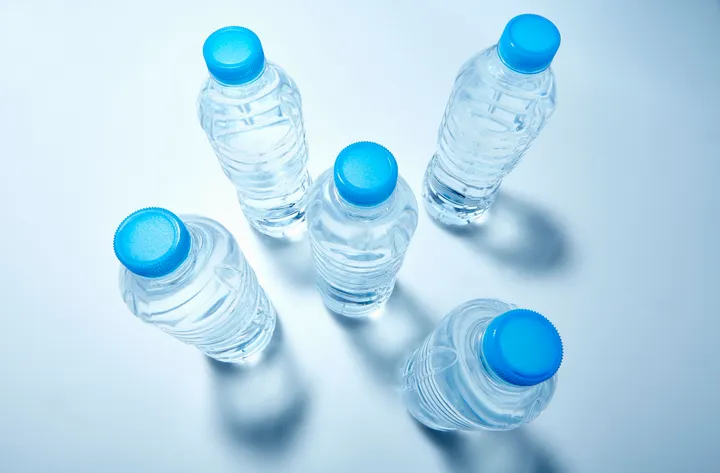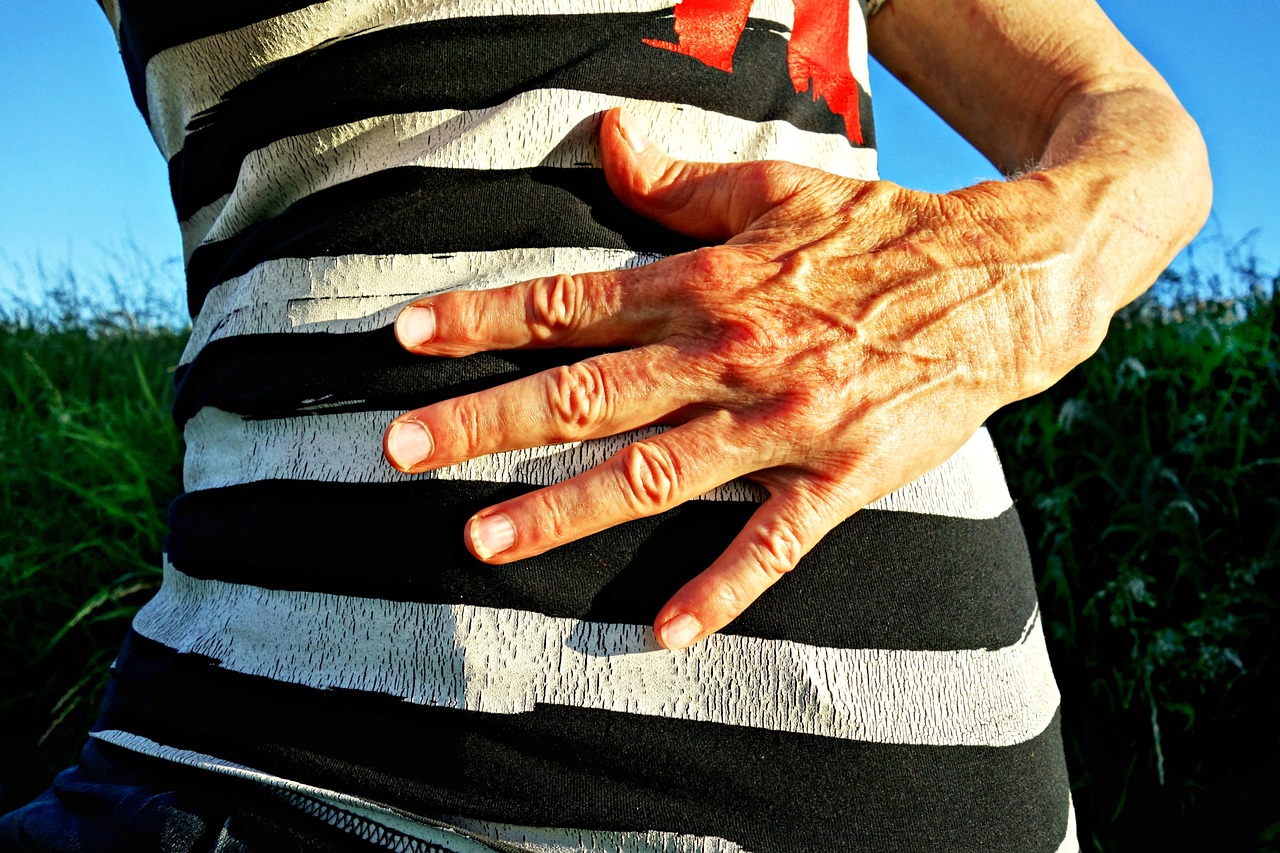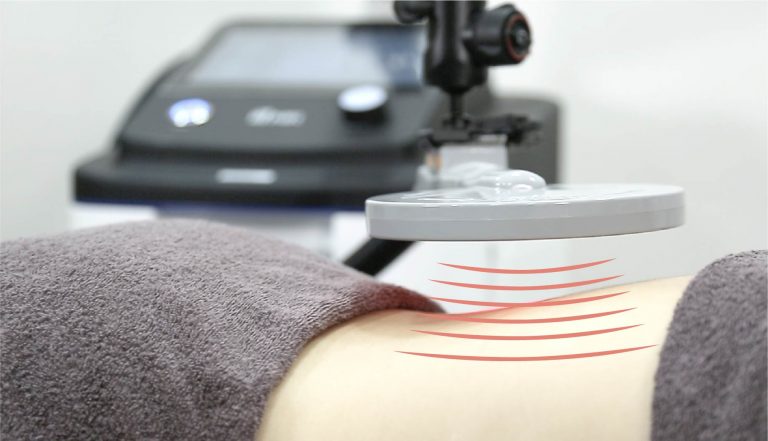As of 2017, people around the world are buying plastic water bottles at a rate of 1 million bottles per minute, and the average American consumes 45 gallons of bottled water per year.
While bottled water sales have continued to surge since 2010, with U.S. bottled water sales expected to climb to 15 billion gallons by 2020, data shows that experts say there are good reasons to ditch plastic for good.
Here’s what you need to know:
There’s some evidence that shows bottled water may contain potentially harmful chemicals in its packaging.
Phthalates, also known as plasticizers, are a class of man-made chemicals used to make water bottles and other plastics more durable and flexible. People warn against exposure to phthalates because these chemicals can affect a person’s endocrine system, the system that produces and releases hormones.
Some studies have found that contamination from plastic water bottles alone is not high enough to cause harm to bottled water drinkers. However, since most people are already exposed to endocrine-disrupting chemicals every day from many other sources—from household cleaning products to certain fragrances—it’s wise to limit additional exposure to such chemicals as much as possible.
These chemicals have been linked to a number of reproductive, immune and neurological conditions, including gestational diabetes, ADHD, fertility problems, liver disease in children, asthma and an increased risk of breast cancer.
The U.S. Environmental Protection Agency (EPA) is so concerned about these potential effects that last month it designated another common endocrine-disrupting chemical, known as PFAS, as a “hazardous substance.” These are colloquially known as “forever chemicals” because they can remain in the environment for decades.
Although phthalates and other endocrine-disrupting chemicals are typically not detected in raw water sources, plastic around bottled water can contaminate the liquid over time. Levels of contamination vary, but plastic-to-liquid contamination is primarily exacerbated by two things: how long the plastic and drink (or food) are in direct contact, and whether the plastic is heated while in contact with the food or liquid.
Bottled water is a concern on both counts because it is often stored in warehouses for long periods of time and then transported through warmer temperatures.
Such a small amount of water surrounded by so much hot plastic sits in such conditions for months or even years before it reaches the consumer, which is a long time.
Phthalates separate from plastic in the first place because they are not part of the plastic matrix itself, but rather are loosely bound to it.
When exposed to high temperatures, chemical bonds break relatively easily, allowing phthalates to leach into food or drinks contained in plastic packaging. This contamination can also occur when bottled water comes into contact during the production stage. PVC (one of the most widely produced plastics in the world, known for its hardness) and other plastic machinery.
The amount of plastic surrounding such a small amount of water is also worth considering. Water bottles are susceptible to contamination due to the long direct contact time and large contact area between water and plastic packaging materials.
Metals, bacteria, plastic pieces and more have been found in bottled water before.
In addition to possible exposure to these chemicals, multiple studies have found the presence of other substances in bottled water.
Studies have found traces of drugs, microplastics, bacteria and heavy metals. In fact, a study in the Journal of Environmental Health found that several popular bottled water brands contain heavy metals such as silver, barium, cobalt, chromium, copper, nickel, lead and zinc.
Additionally, research published in 2019 by the National Library of Medicine found that bottled water contains toxins, bacteria, fungi and “microbial contaminants” that can cause different illnesses in humans, most commonly gastroenteritis or the stomach flu.
The study concluded that bottled water is generally considered safe and sterile, however, given the metabolic diversity and versatility of microorganisms that enable different species to survive and even reproduce in the environment, health risks should not be minimized change.
Contaminated bottled water can harm your health, including causing gastrointestinal illnesses, reproductive problems, and neurological disorders. People with weakened immune systems “may be more susceptible to getting sick from certain contaminants,” and it advises what immunocompromised people can look for on bottled water labels to prevent the tiny parasite Cryptosporidium parvum, also known as Cryptosporidium insect). The parasite is harmless to most consumers (one study suggests that about 80% of North American adults have previously ingested it, but most are unaware they are infected parasites), but can cause chronic or severe illness or even death in immunocompromised people.
In addition to bacteria concerns, testing conducted by Consumer Reports in 2020 found concerning levels of arsenic in some bottled water. A small 2018 study in Frontiers in Chemistry also found that 93% of 259 bottled water samples analyzed contained microplastics — tiny pieces of plastic. Some fragments are large enough to be seen without a magnifying glass or microscope.
Although microplastic particles have been found in many other places (a 2019 study found microplastics in the air around French mountains), these chemicals are particularly abundant in bottled water. In addition to being found in the plastic bottles themselves, the process of bottling water can also cause “polypropylene fragments” (used to make bottled water caps) to enter the contents of the bottle. Microplastics have also been found in tap water, but bottled water contains about twice as much microplastics.
Bottled water may be deficient in essential natural minerals more commonly found in tap water.
In 2001, researchers at McGill University studied the levels of essential minerals such as calcium, magnesium and sodium commonly found in tap water and compared the results to levels in many brands of bottled water. The team found that tap water had significantly higher levels of these minerals than U.S. bottled water brands in mineral water.
The findings also show that in some cities, drinking just two liters of tap water can meet 6% to 18% of the recommended daily calcium intake.
Too many people these days get their vitamin D and calcium from supplement sources like multivitamins, and some studies show that in some cases, too much calcium through supplements can even cause damage to your heart, so it’s a good idea to try Get your vitamins and minerals from natural dietary sources whenever possible, and supplement with as much calcium as possible.
And, of course, plastic bottles are awful for the environment.
Although this question is simple and has been discussed extensively before, it is worth mentioning. First, each bottle of water creates a large carbon footprint during its life cycle, which contributes to climate change. It also causes huge pollution, as only an estimated 29.1% of PET bottles and cans are ultimately recycled.
What’s more, the manufacturing of bottled water also creates a large water footprint.According to NPR, the amount of water in the packaging, shipping and production of each bottle can end up being six to seven times the amount of water inside each bottle.
So, what can we do about this?
Experts say the degree of serious harm, if any, caused by bottled water varies from person to person. It’s hard to measure.Rather, they simply want consumers to be informed when making their decisions.
Multiple studies have also shown that people are not drinking enough water in the first place, and experts stress that people need to drink more water every day.
If you want to reduce your intake of plastic bottled water, consider the following:
Drink tap water if you’re able.
It sounds like an obvious answer, but many people don’t do it for a variety of reasons. For some people in some parts of the country, this is very dangerous.
Many people buy bottled water because they believe it comes from a mountain stream or is filtered in a uniquely powerful or thorough way. But mountain water sources are rare and may not be “purer” than most city water sources, and many popular bottled water brands get their water directly from the tap.
Although the Safe Drinking Water Act of 1974 legally gave regulation of America’s public drinking water to the EPA, the Food and Drug Administration quickly assumed responsibility. Today, the FDA is responsible for ensuring that bottled water quality standards are compatible with EPA public drinking water standards, but the agency acknowledges on its website that in some cases bottled water and public drinking water standards differ, and when “EPA sets contaminant standards, the FDA either used them for bottled water or found that bottled water did not require the standards.
Tap water is tested dozens to hundreds of times a day, and these tests must be made public. That’s not the case with bottled water, so you don’t know exactly what’s in it.
Get a filter for sink water.
It’s also worth noting that the water filtration systems used by many bottled water brands may be no different than the home filtration systems people can buy or the filtration systems that come with many brands of refrigerators.
Despite the marketing claims, in many cases the bottled water you buy is no purer than the water that comes out of the tap.
Look for alternative bottles.
No one brand of plastic water bottles is safer than another. If you must buy bottled water, buy glass bottles if you can.
If convenience is your main concern, consider investing in a high-quality reusable bottle. Choose reusable stainless steel water bottles, they are better for you and the environment.
Store any plastic bottled water correctly.
If people still want to drink water from plastic bottles, keep it in a cool place and drink it relatively quickly rather than storing it for years to avoid further phthalate contamination.
Sometimes bottled water is unavoidable, and that’s okay. But it should be a fallback, not your first choice.




